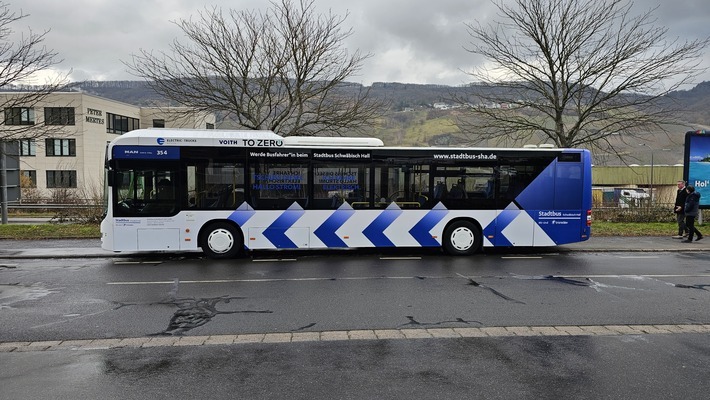Transdev has launched the first diesel-to-electric converted bus. Operating in Schwäbisch Hall, Baden-Württemberg, this electric bus is the result of an ambitious retrofit project to enhance sustainable public transport.
The project aligns with Transdev’s commitment to reducing local emissions and improving air quality. This bus, now integrated into the regular fleet of Transdev’s subsidiary, Stadtbus Schwäbisch Hall, is part of a larger initiative to replace traditional diesel buses with cleaner alternatives.
Key innovations in the retrofit project
The retrofit involved replacing the diesel engine of a 10-year-old MAN A21 Lion’s City bus with Voith’s innovative VEDS (Voith Electric Drive System). This efficient electric drive system has been awarded for its sustainability across Europe.
The retrofit process follows seven major steps, including reverse engineering, mechanical and electrical design, integration, and testing. With successful implementation, Transdev now operates one of the first retrofitted electric buses in Germany.
Sustainable and cost-effective solution
The collaboration involved partners like Voith, Orten Electric Trucks, and ToZero electric vehicles. Orten Electric Trucks, with extensive experience in electric mobility, specializes in converting traditional vehicles. Meanwhile, ToZero led the technical planning and implementation.
We are very pleased that after many months of intensive work and overcoming numerous challenges, we are now able to complete this ambitious project and deploy the electric bus, which was converted from a diesel bus, in regular service. This bus is one of the first in Germany to have been successfully converted and reintegrated into regular service. We are pleased that we, as the Transdev Group, are once again able to pioneer public transportation and make a further contribution to greater climate protection.
Michael Dalhof, Managing Director of Stadtbus Schwäbisch Hall
Overcoming Schwäbisch Hall’s Terrain Challenges
Schwäbisch Hall’s steep landscape posed a challenge for the retrofit team. To meet these demands, the bus was equipped with additional rooftop batteries, alongside the standard 310 kW VEDS batteries inside the bus. Despite these additions, the vehicle’s seating capacity remains unchanged, while only the extra batteries are visible on the roof.
Why Retrofit?
A 2014 bus still has significant service life left, making a retrofit more sustainable than purchasing a new vehicle. Retrofitting is not only more affordable but also receives government incentives. Furthermore, this solution reduces CO₂ emissions, conserving resources that would otherwise be used in manufacturing a new bus.
Though the retrofit is a major step toward more sustainable transport, there are still regulatory challenges. Traffic contracts in public transport often have age limits for vehicles. Thus, retrofitted buses need an extension clause to remain in service longer.

